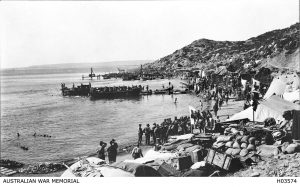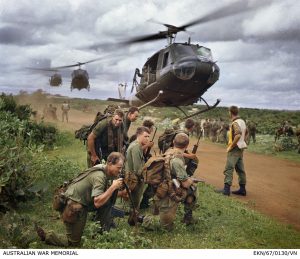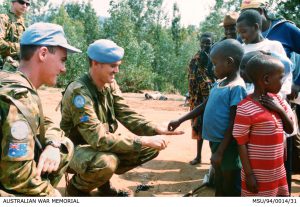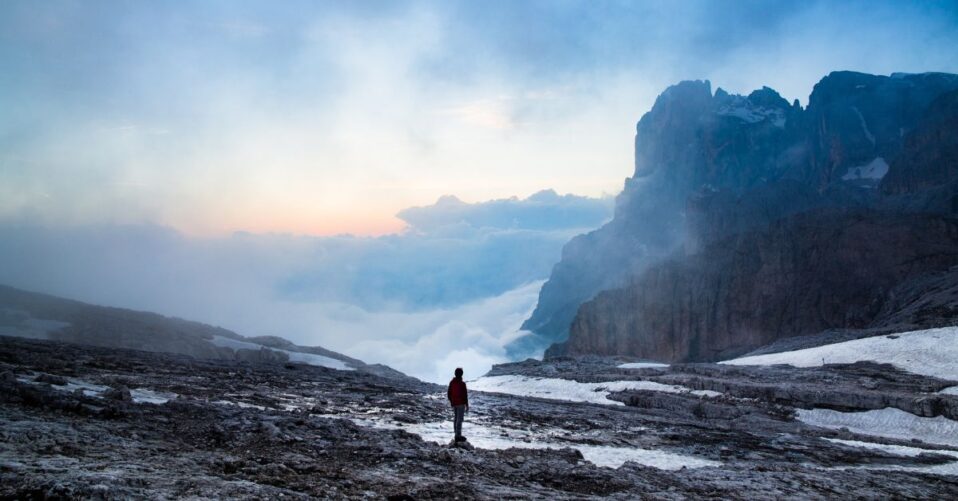 The landing on Gallipoli was already etched into the minds of many people while the Gallipoli Campaign was still being fought. It became a defining moment in Australia’s history. At the first event to commemorate the war dead on 2 July 1915, the South Australian Governor, Sir Henry Galway said “If any day is to be chosen for Australia’s day, I think it should be April 25 … Those heroes will hand down the finest traditions to their sons and their sons’ sons …”. In 1916, the Acting Prime Minister, George Pearce, officially named 25 April as ‘Anzac Day’. The first anniversary of the landing was observed in Australia, New Zealand and England. In London, more than 2000 Australians marched through central London to Westminster Abbey. King George V, Australian Prime Minister Billy Hughes and Allied military leaders attended the service. Australian troops in Britain, Egypt and France attended local services to commemorate the landing at Gallipoli.
The landing on Gallipoli was already etched into the minds of many people while the Gallipoli Campaign was still being fought. It became a defining moment in Australia’s history. At the first event to commemorate the war dead on 2 July 1915, the South Australian Governor, Sir Henry Galway said “If any day is to be chosen for Australia’s day, I think it should be April 25 … Those heroes will hand down the finest traditions to their sons and their sons’ sons …”. In 1916, the Acting Prime Minister, George Pearce, officially named 25 April as ‘Anzac Day’. The first anniversary of the landing was observed in Australia, New Zealand and England. In London, more than 2000 Australians marched through central London to Westminster Abbey. King George V, Australian Prime Minister Billy Hughes and Allied military leaders attended the service. Australian troops in Britain, Egypt and France attended local services to commemorate the landing at Gallipoli.Early in the Second World War, Anzac Day acknowledged a new generation of service personnel and celebrated Allied victories. In 1942, with Japan threatening, there were no official dawn services or marches. When events were reinstated in 1943, veterans of two wars were taking part. Never again would Anzac Day be an occasion dedicated only to the memory of the Great War. By the 1950s, after two World Wars and the Great Depression, people were wearying of reminders of darker times. Some veterans perceived Anzac Day as a glorification of war and refused to participate. This view gathered some momentum as Australia’s involvement in the Vietnam War became increasingly unpopular. The Gallipoli Campaign’s 50th anniversary in 1965 initiated a revival of Anzac Day. By the 1970s, there was greater academic and popular interest in the First World War. Anzac Day came to be seen through the prism of war as a cause of misery, pain and suffering. In the late 1970s, protesters again called into question the commemoration of Anzac Day. Some groups who felt excluded from the Anzac story, such as First Nation Australians, brought their experiences into the spotlight. In the 1980s, new groups were allowed to join the march, including the descendants of veterans and members of the defence forces of Allied nations who had migrated to Australia.
Today, Anzac Day also honours those who have served through recent conflicts and on peacekeeping missions. The day reflects the diversity of modern military operations as young veterans join with veterans of earlier wars, connected by the experience of service. Now a tradition over 100 years old, Anzac Day has become Australia’s most important secular occasion.
Anzac Day can be a deeply emotional time for Australia’s veterans and their families and some may find this time of year difficult.
Open Arms – Veterans and Families Counselling Service (formerly VVCS) provides free and confidential counselling and support for current and former ADF members and their families. They can be reached 24/7 on 1800 011 046 or visit Open Arms Website for more information.
Information supplied by the Australian Government Department of Veteran Affairs.






